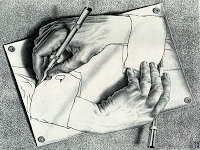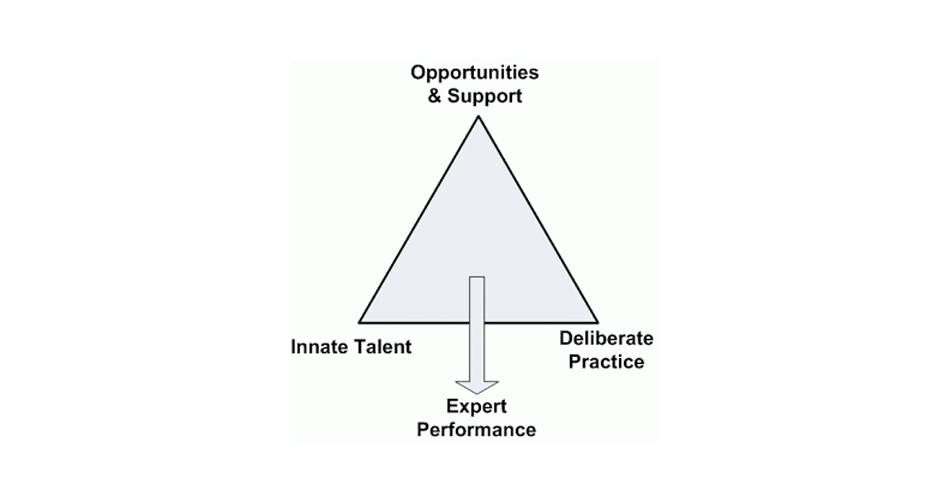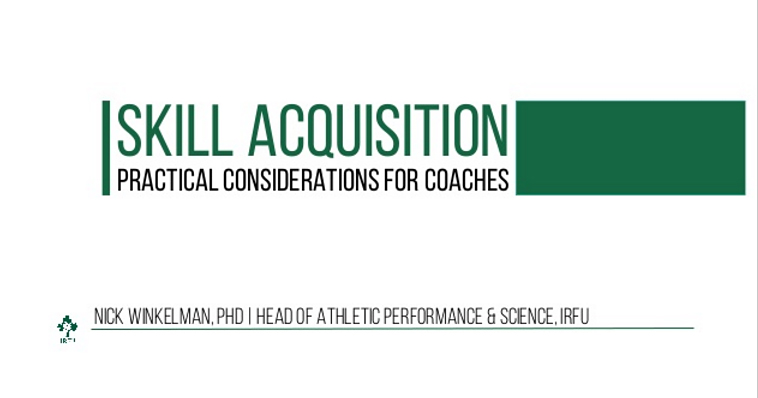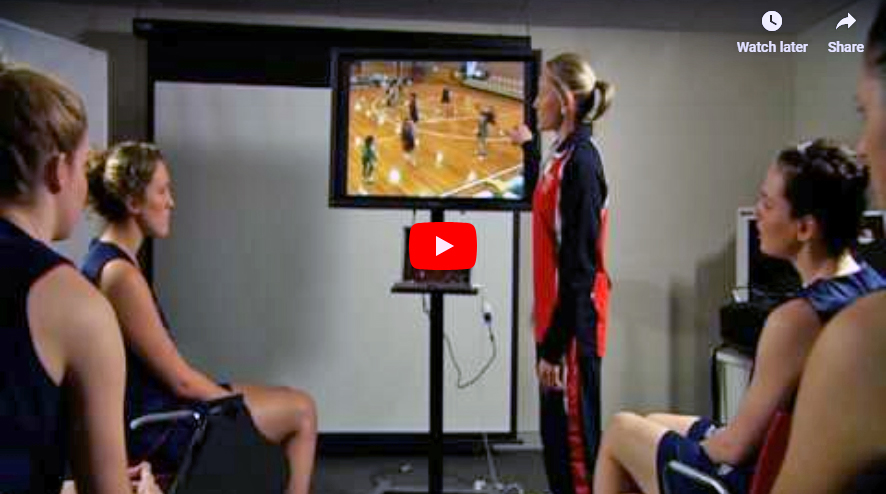Interview with Professor Keith Davids
I am very proud to present the email interview I had with Professor Keith Davids, the leading researcher in the motor control and learning field, author of couple of books and the professor at the School of Human Movement Studies at Queensland University of Technology in Brisbane, Australia.
I would like to thank Professor Davids for his time and good will to do this interview in spite of his working obligations. Writings by Professor Davids were and still continue to be very influential on my coaching knowledge and philosophy. I hope that this interview will bring more food for thought for the coaches and athletes that follow Complementary Training blog. Enjoy!

Mladen: It is my real pleasure to have you here on this blog Professor Davids. Can you please share with the readers your background, and how you came to become one of the leading researchers in the motor control and learning field?
Keith Davids: Thanks for the invitation Mladen and it’s a pleasure to share these ideas with you. First, a little information on my background. I went to St Mary’s College in Twickenham (part of London University then) in the early 1970s and quickly realized that I enjoyed the theoretical basis of Physical Education, especially skill acquisition and motor learning. After teaching for a couple of years in West London, I started a PhD at Leeds University in the UK and eventually made my way into University teaching.
My research career started to take off when I joined the staff of Liverpool John Moores University (known as Liverpool Polytechnic then) in the mid 1980s. There I did what most solid academics do: teach, conduct research, publish papers etc. When I joined Manchester Metropolitan University (MMU) in the early 1990s, my research interests were mostly theoretical and I was lucky enough to work with some excellent PhD students such as Mark Williams, Simon Bennett, Chris Button, Craig Handford, Saleh Al-Abood and Derek Ashford. Our work was mainly in the ecological dynamics area looking at motor control, but there was growing interest from physical educators, pedagogues and coaches and sport scientists. Due to my background in Physical Education I maintained a focus on application of theoretical ideas in sports teaching and coaching. It was there that the first seeds of the constraints-led approach to skill acquisition emerged.
By 2002 my wife Anna and I had 3 young children and we moved abroad to the city of Dunedin in New Zealand’s south island to work at the University of Otago. There the application of a constraints-led approach in a nonlinear pedagogy emerged with more outstanding PhD students including Jia Yi Chow and Robert Rein. Finally, we have ended up in Brisbane Australia where there I am working at Queensland University of Technology. I have excellent relationships with the skill acquisition researchers at the Australian Institute of Sport, especially Rick Shuttleworth, and with the Queensland Academy of Sport. I have around 20 PG students working on various skill acquisition projects, including a number with my colleagues (and ex-PhD students) Duarte Araujo and Pedro Passos at the Technical University of Lisbon. My view is that collaborations are the key to productive applied science research on sport performance.
Mladen: Can you please provide us a short summary of constraints-led approach and non-linear pedagogy and the way they influence contemporary coaching, physical therapy and P.E. practices?
[sociallocker]
Keith Davids: As I mentioned earlier, the constraints-led approach emerged from our theoretical work on movement coordination and control in the 1990s at MMU. I was heavily influenced by the work of James Gibson , Scott Kelso, Michael Turvey and Karl Newell and quickly noted that these ideas could be applied to the study of skill acquisition. Briefly, a constraints-led approach proposes that the most relevant scale of analysis for studying skill acquisition is at the level of the performer-environment relationship. Looking at each component separately is a weakness. Karl Newell identified 3 main categories of constraints as belonging to the person, the environment and the specific task. From their interactions behavior (including skill acquisition) emerges. Pedagogists can mainly shape the task constraints during practice, as well some individual characteristics such as fitness, speed, strength, flexibility etc. Governments and communities can shape environmental constraints on behavior. That’s the gist of the approach. Nonlinear pedagogy is an approach to practice which recognizes that the performer/learner in sport is a nonlinear dynamical system which self-organises its behavior under interacting constraints. The main role of the coach/teacher is to identify the key constraints on each individual and to manipulate them in a principled way to encourage learning. These principles have been developed in 2 recent books:
Renshaw, I., Davids, K. & Savelsbergh, G.J.P. (Eds.) (2010). Motor learning in practice: A constraints-led approach. London: Routledge
Davids, K., Button, C. & Bennett, S.J. (2008). Dynamics of skill acquisition: A constraints-led perspective. Champaign, Ill.: Human Kinetics.
Mladen: Decision making is currently a hot topic in the motor control and learning research. Can you please give us a short overview of the advances in this field and how it influences the coaching practices?
KB: Yes, it certainly is a hot topic Mladen. Believe it or not traditional approaches to decision making for action in psychology are influenced by early models in economics. The main ideas are that decision making processes reside in the individual and that there is a single common decision outcome for each performance situation, towards which each performer should work. In ecological dynamics we explore the ideas that decision making emerges from the interactions between a performer and the environment and that there may be more than one useful decision which can facilitate performance in dynamic environments like sport. We also believe that simulations of decision making contexts in experiments really need to be representative of the specific performance environments; if not, then you may observe artificial behaviours. So, emergent decision making processes need to be studied in highly realistic simulations or actual performance contexts with a range of constraints influencing behavior. When we have adopted these approaches, we have observed that movement pattern variability is a very useful process which allows performers to adapt their movement patterns, often resulting in quite rich and varied behaviours which allow task goals to be achieved. What this implies is that coaches need to create learning and performance environments which allow athletes to achieve the same task goals in different ways. Coaches must not be too prescriptive in identifying one specific decision to be made by each athlete in a particular performance situation. Because these decisions and actions are emergent, they can be rarely planned in advance. A key principle in coaching is for pedagogues to distinguish clearly between performance outcomes and the processes by which these specific outcomes are achieved by each individual athlete. Typically in sport, the same outcomes can be achieved in different ways.
Mladen: One of mine current theoretical issues I am struggling with is the dichotomy of skills and abilities and the way they split coaching in two halves: training and practices; skill acquisition and physical conditioning; skill coaches and strength and conditioning coaches; technical and tactical training sessions and physical training session, etc. What is the definition of each and what is their relationship, and how can a complementary definition of each influence contemporary coaching practices? Can we look at motor abilities as intrinsic dynamics of the athletes and everything else as a certain skill with more or less transfer and how this fits within your concept of organism~environment concept?
Keith Davids: There are many questions here and they are best resolved by reading the material in the two books I have mentioned under point 2 above. Traditionally, abilities tend to be recognized as underlying components which are fundamental to each individual, such as balance, movement time, flexibility etc. Skills are actions which are assembled to achieve performance outcomes in particular contexts like ball games or aquatic sports . These relevant actions are supported by various abilities.
In ecological dynamics, processes of skill acquisition refer to the ‘goodness of fit’ between an athlete and the environmental demands. Therefore, as you were implying, a very good way of ensuring that abilities are exploited and specific skills are acquired by learners may be to integrate many different aspects of training into a more holistic form of task organization. This approach to coaching should also ensure that practice tasks are ‘representative’ of the performance environment.
The athlete-environment relationship can be captured by the links between an athlete’s ‘intrinsic dynamics’, which are created by the genetic structure, past development and learning of each individual, and the specific ‘task dynamics’ (roughly how the components of a task relate to each other over time). Motor abilities form part of the intrinsic dynamics of each individual athlete. Where the intrinsic and task dynamics cooperate with each other, coaches will observe an athlete functioning successfully in a specific performance context. Where they compete with each other, there will be a lag in the individual functioning successfully. Intrinsic dynamics are rich and varied for each individual: so why should we expect every performer to solve performance problems in the same way? As the old saying goes: ”There are many ways to skin a cat”….and some ways may be more, or less, efficient and effective than others. The role of the coach is to organize and manipulate the practice task constraints according to the needs of different athletes. This approach will allow coaches to focus on the relationship between the intrinsic dynamics of each individual and the task dynamics. The expectation should be on individuals to solve performance problems in fairly unique ways. This process can form the basis of creativity in sport.
Mladen: Currently popular books on success and talent degrade the nature in nature vs. nurture dichotomy. In your opinion is there a real dichotomy between them and which factor is more important in sporting success? Is there a real talent identification and what is your opinion on early specialization versus multilateral development in long term athlete development?
Keith Davids: I think the nature v nurture has been recognized as a ‘red herring’ by most theoreticians in different disciplines now. An individual’s intrinsic dynamics are constantly shaped in life by the interaction of genetic structure and environmental influences. That is why the relevant scale of analysis is the person-environment relationship. Both genes and environmental influences can shape performance in a specific activity in meaningful ways. One needs a genetic threshold, of course, and athletes can exploit a genetic advantage such as speed endurance capacity or strength or hand-eye coordination. But, equally, such genetic advantages need a practice/training environment for their expression. Without family support, access to specialist coaching and facilities, performance can be constrained to a certain degree.
The ecological dynamics perspective shows how the interaction of an individual with the environment is rich, varied and ongoing. In a nonlinear system, how can one predict eventual outcomes from early beginnings? Additionally, how can a coach predict future changes to rules and equipment materials which might favour one athlete over another? That is why talent identification is almost impossible, beyond very basic predictions. It is also a wasteful approach. It is far better to focus on developing talent, with a view of individuals as being capable of solving performance problems in unique and diverse ways. This is less wasteful and leaves many more athletes in the system for as long as possible, to encourage development. Coaches need to see individuals as nonlinear systems having diverse pathways to success. These pathways can vary in trajectory.
[EDIT] Interesting article on the subject by professor Keith Davids can be found here
Mladen: I just finished the Outliers by Malcolm Gladwell, and in my opinion he puts a real emphasis on nurture over nature (or innate talent), but with slight difference compared to other authors out there: he identifies the opportunities as one of the most important factor in success. My question would be, if we could induce opportunities as environmental constraints consisting of economical, political, educational and social environment in general, could we improve our sporting success? Or in other words, how important are those environments as a constraints of sporting success of a certain country?
Keith Davids: You have made a very good point for many reasons Mladen. In my view Gladwell also does recognize the environment’s role, exemplified by his discussion of the value of social support networks on cardiac health of individuals. Creating opportunities for participation by focusing on the environment would be a good start. Interestingly, this process is being recognized by public health specialists who are looking at how best to design environments that allow people to remain or become physically active. But you are right, the main environmental constraints in this respect are social, political, ideological, educational and economic. Looking at how these environmental constraints interact is also a good model for elite sport agencies to follow. The traditions of elite sport performance and development have become too Darwinian in outlook, in my view. Our work examining the acquisition of expertise in elite cricketers in Australia and elite footballers in Brazil has shown the relevance of environmental constraints such as social customs, opportunities, community support, family networks. If we provide opportunities for performance development over the lifespan and expect individuals to take diverse performance development pathways, then I am sure there will be less wastage and more talent being developed in sport.
By the way, if you want to read a different view to that of Gladwell in the pop psychology literature, which really emphasizes the environment’s role, you should read ‘Bounce’ by the British author Matthew Syed, an ex-table tennis champion.
Mladen: Is there anything else you would like to add? What are the good practical resource that coaches can consult if they want to find more information?
Keith Davids: I hope these ideas help coaches to understand the importance of individual differences between athletes. Variability at all levels of performance is so important to understand and interpret. Look at manipulating the key constraints on each individual athlete to aid his/her unique development. Learning design is key in organizing practices that are representative of performance. Question everything you do from that perspective. Although the environment is important, access to the best facilities and equipment can be circumvented through the design of representative practice/training programmes. Although genetic structure is highly relevant, without a supportive environment and relevant and meaningful practice/training regimes, that advantage will be lost.
Mladen: Thank you for this interview Professor Davids. It was my pleasure and I am sure readers enjoyed too.
Keith Davids: Thanks again for the invitation Mladen and I hope your readers enjoyed the insights I tried to provide. Best wishes for your work.
Interview with Professor Keith Davids was done on Tuesday, 5th October, 2010.
[/sociallocker]











Responses